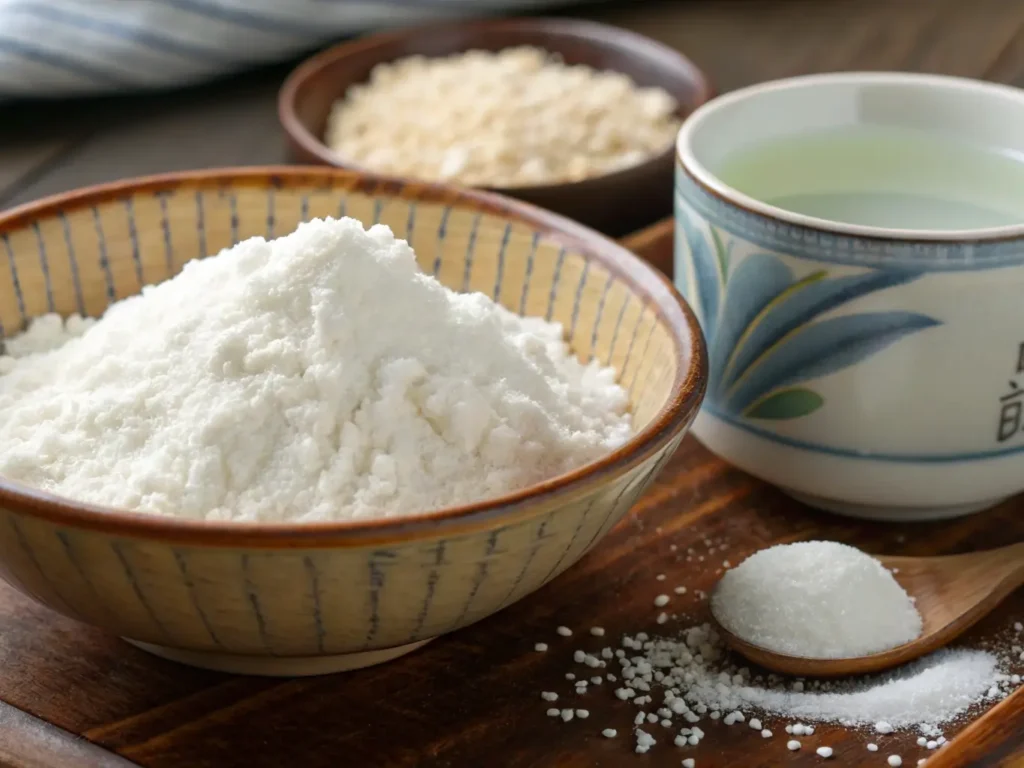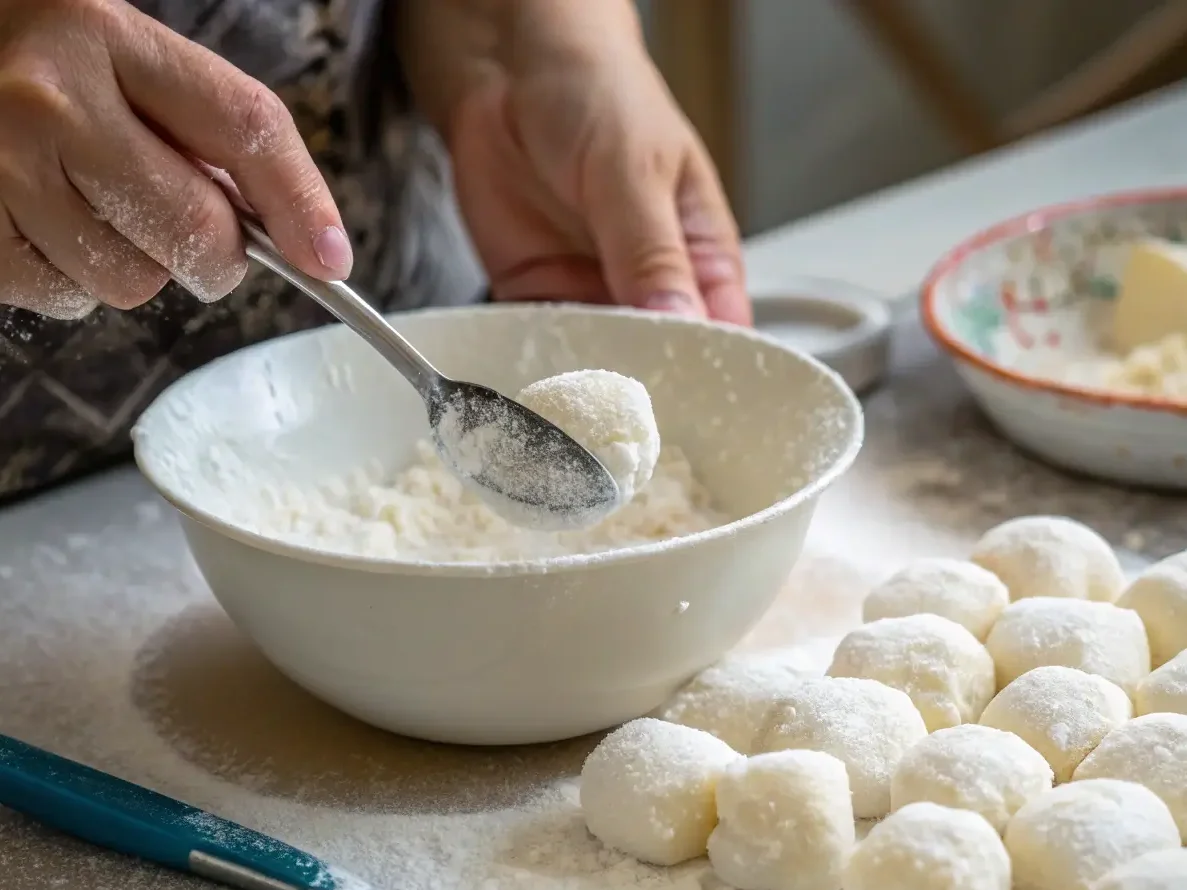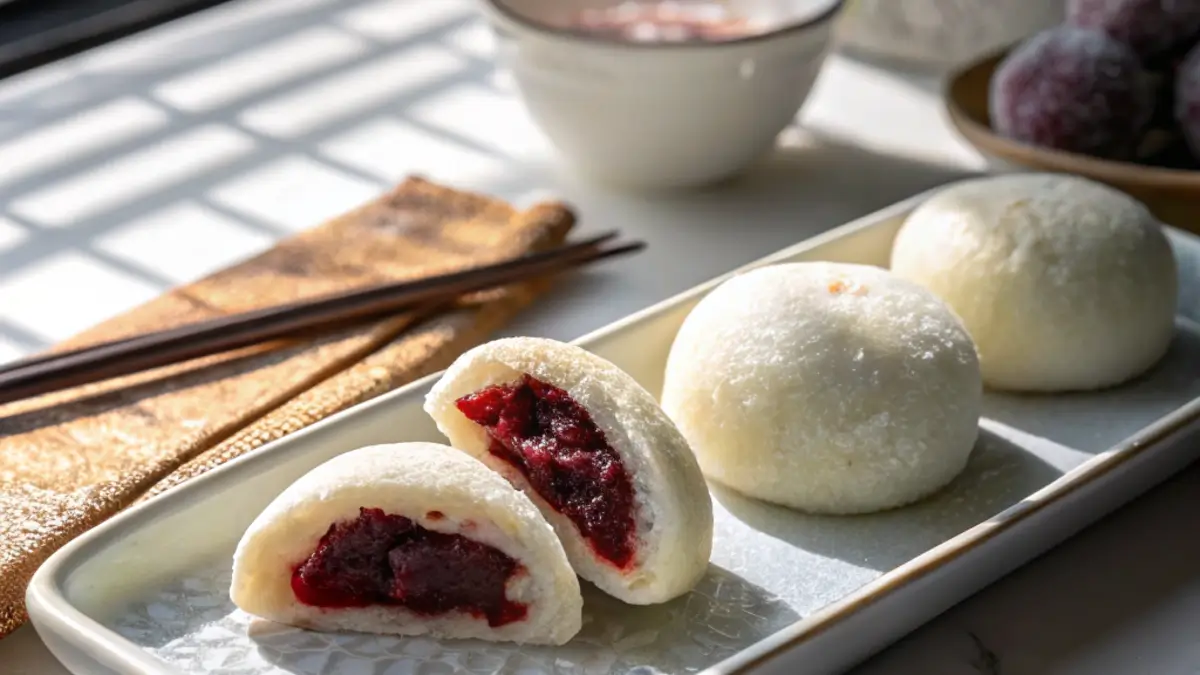How to Make Perfect Mochi at Home Step-by-Step
There’s something magical about mochi. The way it stretches, the way it melts in your mouth, the way it carries the warmth of tradition in every bite. I still remember the first time I tried freshly made mochi—soft, pillowy, and just the right amount of chew. It was at a tiny Japanese bakery, where an elderly woman carefully shaped each piece by hand. She handed me one with a gentle smile, and as I took my first bite, I knew I was hooked for life.
Whether you’ve grown up eating mochi or you’re discovering it for the first time, this guide will walk you through its history, popular variations, and even an easy homemade recipe. If you love Japanese cuisine, you might also enjoy this Katsu Sando recipe—a crispy and satisfying sandwich that pairs beautifully with a sweet mochi treat.
What is Mochi? A Little Bite of Tradition
Mochi is more than just a chewy rice cake—it’s a symbol of celebration, luck, and togetherness in Japanese culture. Dating back over a thousand years, mochi was originally made for Shinto rituals and royal feasts. Today, it remains a staple for special occasions, especially New Year’s, when families gather to make kagami mochi, a beautiful stacked version that represents prosperity.
Traditionally, mochi is made by steaming glutinous rice (also called sticky rice or sweet rice) until soft, then pounding it into a stretchy, smooth dough using a wooden mallet and stone mortar. It’s a process that requires patience and teamwork, but the results? Absolutely worth it.
Different Ways to Enjoy Mochi
The beauty of mochi is how versatile it is. Sweet or savory, warm or cold, stuffed or plain—there’s a version for every craving.
Sweet Mochi Favorites
- Daifuku Mochi – Soft, chewy mochi filled with sweet red bean paste, peanut butter, or even chocolate.
- Mochi Ice Cream – Creamy ice cream wrapped in a thin layer of mochi. A bite-sized delight that’s cold, chewy, and addicting.
- Sakura Mochi – A delicate pink mochi, wrapped in a salted cherry blossom leaf, offering the perfect balance of sweet and floral.
Savory Mochi Classics
- Isobe-yaki – Grilled mochi brushed with soy sauce and wrapped in crispy seaweed.
- Ozoni Soup – A comforting New Year’s dish, where mochi is served in a light broth with vegetables.
- Kinako Mochi – Mochi dusted with roasted soybean flour (kinako) and a sprinkle of sugar. Simple, nutty, and deeply satisfying.
Mochi also pairs beautifully with matcha, a traditional Japanese green tea with a naturally energizing effect.
How to Make Mochi at Home – The Easiest Recipe

Homemade mochi might just be one of the most rewarding things you’ll ever make. The first time I tried, I ended up with sticky hands, flour-covered countertops, and a kitchen that smelled like warm, sweet rice. But that first bite? Pure joy.
Ingredients You’ll Need
- 160g (1 ¼ cups) glutinous rice flour (mochiko or shiratamako)
- 180ml (¾ cup) water
- 50g (¼ cup) sugar
- Cornstarch or potato starch, for dusting
- Optional fillings: Sweet red bean paste, peanut butter, Nutella, or ice cream
Step-by-Step Guide
- Mix the batter – In a microwave-safe bowl, whisk together the glutinous rice flour, water, and sugar until smooth.
- Microwave in intervals – Cover the bowl with plastic wrap and heat for 1 minute. Stir, then microwave in 30-second intervals, stirring each time, until thick and sticky (about 2 minutes total).
- Shape the mochi – Dust a clean surface with cornstarch and transfer the warm dough. Flatten it slightly and cut into small pieces.

- Add fillings (optional) – Wrap a small amount of red bean paste, peanut butter, or ice cream inside each piece and pinch to seal.
- Enjoy immediately or store properly – Fresh mochi is best eaten within a day, but you can freeze it for later.
How to Keep Mochi Soft & Fresh
Mochi is at its best when it’s soft and pillowy, but it can dry out quickly if not stored properly.
✔ Room temperature – Store in an airtight container for up to 24 hours.
✔ Freezing method – Wrap individual pieces in plastic wrap and freeze for up to 2 months.
✖ Avoid refrigeration – The cold makes mochi hard and unpleasantly stiff.
FAQs
Is it Gluten-Free?
Yes! Mochi is made from glutinous rice, which contains no gluten. However, check for gluten-containing fillings, like cookies or custards.
Can Mochi Be Dangerous to Eat?
Due to its sticky texture, mochi can be a choking hazard, especially for the elderly and young children. Always eat in small bites and chew thoroughly.
Why is it So Chewy?
The unique chewiness of mochi comes from the high starch content in glutinous rice. When heated and pounded, the starch molecules create an elastic texture, unlike regular rice.
Why You’ll Fall in Love with this recipe
There’s something special about making and sharing mochi. It’s not just about the chewy, delicate texture or the sweet, comforting flavors. It’s about the memories created in the kitchen, the traditions passed down through generations, and the simple joy of eating something made with care.
If you’re new to mochi, I hope this guide inspires you to try it. And if you’ve already fallen in love with it, I hope you’ll take a moment to share a piece with someone special.
For even more delicious mochi variations, check out this trusted recipe guide.


1 thought on “Easy Mochi Recipe”